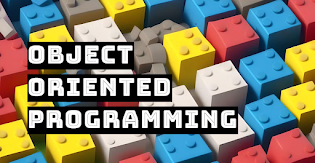Exploring the Basics of Structured Programming – For Newbies
Are you new to programming and feeling overwhelmed by terms like "algorithmic design" and "data structures"? You are not alone. A good developer must overcome This “rite of passage” and it’s very doable. Hopefully, this guide will simplify these concepts and show you how to apply them to build organized and efficient programs.
Grasping the Concepts of Algorithmic Design
Creating algorithms involves developing strategies to tackle
issues—a bit like crafting instructions for your computer to carry out tasks
smoothly and efficiently while mapping out the logical framework your program
will rely on to complete a given objective.
The Basics of Data Structures
Data structures are ways to organize and store data in your
programs. They act like different storage containers, each with its strengths
and weaknesses. Common data structures include:
- Arrays: Great for quickly accessing elements by index.
- Linked Lists: Ideal for dynamic data where elements are frequently added or removed.
- Stacks and Queues: Useful for managing data in a last-in-first-out or first-in-first-out manner.
- Trees and Graphs: Perfect for hierarchical or networked data relationships.
Check out Munjal’s explanation of 8
basic data structures every programmer should know for a deeper look at
specific data structures (2022).
Applying Algorithmic Design and Data Structure Techniques
Applying these techniques effectively requires practice and
thoughtful consideration. Here are some key comparisons to help you choose the
right approach:
· Arrays vs. Linked Lists:
- Arrays offer fast access to elements by index but are less efficient for dynamic modifications.
- Linked Lists excel at adding or removing elements but have slower access times.
· QuickSort vs. MergeSort:
- QuickSort is generally faster in practical scenarios but can degrade in performance in the worst case.
- MergeSort provides consistent performance and is stable, though it uses more memory.
· Hash Tables vs. Binary Search Trees:
- Hash Tables offer quick average-case lookups but can struggle with worst-case scenarios.
- Binary Search Trees maintain sorted order and provide reliable performance.
Here are some questions that you can brainstorm through that
can get you started at a high level:
1. What problem are you trying to solve? Clearly define what your program needs to do.
2. What data structure appears to be the best way to store and organize the data?
3. What category of classification does my specific problem fit in? Geeks4Geeks(2024) explains different types of algorithm classifications beautifully in their article Algorithms Design Techniques.
After implementing your solution, test and refine it. The
goal is to optimize the code as much as possible.
Are Some Designs Better Than Others?
Sure thing, the performance of an algorithm or data
structure comes down to the issue you're tackling head-on. Here are a few
things to keep in mind:
· Time complexity: How long does the algorithm take to run?
· Space complexity: How much memory does it use?
· Scalability: How well does it handle larger amounts of data?
· Simplicity: Is it easy to understand and maintain?
For instance, if you have to look through a large collection
of data, a binary search tree could be more effective than a basic array.
However, an array could be easier and quicker if you're handling a small amount
of data and need to reach elements by their location.
Putting These Methods into Action
Here's how you might apply these concepts in developing a
structured program:
1. Problem analysis and selecting a data structure: Let's say you're building a program to manage a library catalog. You might choose a binary search tree to store book information. This tree allows for efficient searching and maintains alphabetical order.
2. Design algorithms for adding books, searching for books, and checking out books.
3. Write your code, create classes for books and the library catalog, and implement your chosen data structure and algorithms.
4. Test your program with various scenarios and optimize any slow operations.
Remember, becoming proficient in algorithmic design and data
structures takes practice. Start with simple problems and gradually tackle more
complex ones. As you gain experience, you'll understand which approaches work
best in different situations.
Grasping and consistently using these ideas will help you craft organized code.
Enjoy your coding journey!
Bethsheba Handy - Full stack Software Developer
References and
Helpful Resources
GoDaddy. (n.d.). 8 basic
data structures every programmer should know. https://www.godaddy.com/resources/in/web-pro-in/8-basic-data-structures-every-programmer-should-know
Lysecky, R. (2017). CPT
307: Data structures and algorithms. zyBooks.
Shaffer, C. A. (2013,
March 28). Data structures and algorithm. Department of Computer Science,
Virginia Tech. https://people.cs.vt.edu/~shaffer/Book/JAVA3elatest.pdf
Jimenez, D. (n.d.). Data
structures: Lecture 2. University of Texas at Austin. https://www.cs.utexas.edu/~djimenez/utsa/cs1723/lecture2.html
W3Schools. (n.d.). Data
structures and algorithms. https://www.w3schools.com/dsa/dsa_intro.php
Indeed. (n.d.). How to
learn data structures and algorithms. https://www.indeed.com/career-advice/career-development/how-to-learn-data-structures-algorithms



Comments
Post a Comment